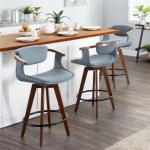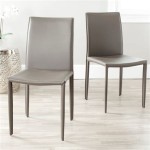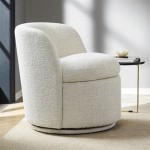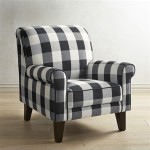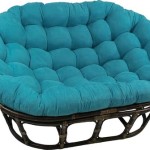Mid-Century Modern White Leather Chair: A Timeless Icon
The mid-century modern aesthetic, characterized by its clean lines, organic shapes, and functional design, has experienced a resurgence in popularity. Within this design movement, the mid-century modern white leather chair stands out as a particularly sought-after piece of furniture. Its enduring appeal stems from its versatility, comfort, and ability to seamlessly integrate into a variety of interior styles. This article explores the defining characteristics, historical context, materials, and design variations of the mid-century modern white leather chair, examining its lasting influence on contemporary interior design.
The mid-century modern period, broadly defined as spanning from the mid-1940s to the late 1960s, was a time of significant innovation in furniture design. Designers were experimenting with new materials and manufacturing techniques, moving away from the ornate styles of previous eras. Simplicity, functionality, and affordability were prioritized, reflecting the post-war focus on practical living. The use of new materials like molded plywood, plastic, and foam cushioning allowed for greater flexibility in design and construction. The white leather chair, embodying these principles, became a symbol of modern comfort and sophistication.
This specific type of chair often features a minimalist frame, typically crafted from wood or metal. The chair's overall design emphasizes smooth curves and uninterrupted lines. The stark contrast between the white leather upholstery and the supporting frame contributes to its visual appeal. The chairs are not merely aesthetically pleasing but designed with ergonomics in mind, providing comfortable seating for extended periods. Many designs incorporate features like reclining mechanisms or adjustable headrests, further enhancing the user experience.
Key Characteristics of Mid-Century Modern White Leather Chairs
Several distinguishing features define the mid-century modern white leather chair, setting it apart from other furniture styles. These characteristics are not merely aesthetic but directly contribute to the chair's functionality and overall appeal.
Minimalist Design: One of the defining traits of mid-century modern design is its emphasis on simplicity and functionality. White leather chairs from this era eschew excessive ornamentation and focus on clean lines and understated forms. The chair's design prioritizes the essential elements of seating – comfort, support, and visual harmony – without unnecessary embellishment. This minimalist approach allows the chair to blend seamlessly into a variety of interior settings, from minimalist apartments to eclectic living rooms.
Contrasting Materials: The juxtaposition of materials, particularly the contrast between the smooth white leather and the often-exposed wooden or metal frame, is a hallmark of this style. The warmth of the wood, typically teak, walnut, or rosewood, provides a visual counterpoint to the cool, clean look of the white leather. Similarly, a metal frame, often chrome or brushed steel, adds a touch of industrial chic to the overall design. This interplay of materials creates visual interest and adds depth to the chair's aesthetic.
Emphasis on Comfort: While aesthetics are undoubtedly important, mid-century modern furniture prioritizes comfort. White leather chairs are typically designed with ergonomic considerations in mind, featuring supportive cushioning and carefully considered proportions. The use of high-quality foam or down filling ensures a comfortable seating experience, while the chair's overall shape is designed to promote good posture and reduce strain. Many designs also incorporate features like armrests, headrests, or reclining mechanisms to further enhance comfort.
Material Selection and Construction
The choice of materials plays a crucial role in the durability and aesthetic appeal of a mid-century modern white leather chair. Both the leather upholstery and the frame material are carefully selected to ensure longevity and visual harmony.
Leather Upholstery: The leather used in these chairs is typically a high-quality, full-grain leather, chosen for its durability, suppleness, and ability to age gracefully. Full-grain leather retains the natural markings and imperfections of the hide, adding character and depth to the upholstery. While true aniline leather is sometimes used, more commonly a semi-aniline leather is chosen for its increased resistance to staining and wear. The white color requires careful selection, as it can be susceptible to discoloration and staining. Therefore, protective coatings and regular cleaning are essential to maintain its pristine appearance. Different types of leather finishes, such as matte or slightly glossy, can also influence the overall aesthetic of the chair.
Frame Materials: The frame material provides structural support and contributes to the chair's overall aesthetic. Wood frames, typically constructed from hardwoods like teak, walnut, or rosewood, offer a warm and organic counterpoint to the white leather upholstery. These woods are chosen for their strength, durability, and beautiful grain patterns. Metal frames, often made of chrome or brushed steel, provide a more modern and industrial look. Metal frames are typically lightweight yet strong, allowing for sleek and minimalist designs. Aluminum is another option, often powder-coated for added durability and resistance to corrosion. The construction of the frame is crucial, with attention paid to joinery and stability to ensure the chair's long-term integrity.
Cushioning and Support: Beneath the leather upholstery lies the cushioning, which is essential for providing comfort and support. High-density foam is a common choice, offering a balance of support and resilience. Down or feather filling provides a softer and more luxurious feel, but requires more maintenance to prevent clumping and flattening. The underlying support system, typically consisting of webbing or springs, is also crucial for distributing weight and preventing sagging. High-quality webbing or springs ensure that the chair maintains its shape and comfort over time.
Design Variations and Notable Examples
While the core principles of mid-century modern design remain consistent, white leather chairs from this era exhibit a range of variations in form, style, and functionality.
Lounge Chairs: Lounge chairs are designed for relaxation and comfort, often featuring a low profile and reclined seat. Iconic examples include variations of the Eames Lounge Chair, even though usually produced in darker leather options, many designers created their own versions, sometimes opting for lighter leathers. These chairs typify the mid-century modern aesthetic with their molded plywood shells, comfortable cushioning, and swivel bases. The white leather upholstery adds a touch of luxury and sophistication to these classic designs.
Armchairs: Armchairs offer more upright seating and are suitable for reading, conversation, or working. Many mid-century modern armchairs feature a sculpted frame and comfortable armrests. The Finn Juhl "Pelican" chair, while not always upholstered in white leather, demonstrates the organic shapes and flowing lines characteristic of the movement. Armchairs sometimes feature a higher backrest for added support.
Office Chairs: Even office chairs embraced the mid-century modern aesthetic, with white leather upholstery adding a touch of elegance to the workspace. These chairs typically feature an adjustable height, swivel base, and ergonomic design for optimal comfort and productivity. The Charles Pollock Executive Chair is a prime example, showcasing a sleek and minimalist design with a chrome frame and leather upholstery. The incorporation of clean lines and functional features made these chairs a stylish and practical addition to any office environment.
Reclining Chairs: Reclining chairs offer adjustable seating positions for enhanced relaxation. Some mid-century modern reclining chairs feature a hidden reclining mechanism, maintaining a clean and minimalist appearance. Others may have a more visible and pronounced mechanism, showcasing the chair's functionality. White leather upholstery adds a touch of luxury to these comfortable and versatile chairs.
The mid-century modern white leather chair continues to be a popular choice for homeowners and designers alike. Its timeless design, comfortable seating, and versatility make it a valuable addition to any space. Whether used as a statement piece in a living room or as a functional addition to an office, it embodies the enduring appeal of mid-century modern design.

Baxton Studio Masterpiece Mid Century White Faux Leather Upholstered Chair 28862 6236 Hd The Home

White Leather Mid Century Chair

Glitzhome Mid Century Modern White Leatherette Gaslift Adjustable Swivel Office Chair Gh1004202903 The Home

Mid Century Modern White Leather And Teak Dining Chair

Baxton Studio Wassily Cream Leather Mid Century Modern Accent Chair Affordable Furniture In Chicago

Momei Mid Century Modern Saddle Leather Accent Chair White Contemporary

C4 Affordable Modern Design Baxton Studio

Linesly Mid Century Modern White Upholstered Dining Chairs Pu Leather Set Of 2 Homary

Simpli Home Marana Faux Leather Ergonomic Mid Century Modern Dining Chair In White Axcmardc Wh The

Mid Century Faux Leather White Accent Chair Armchair With Stainless Steel Frame Set Of 2 Homary

